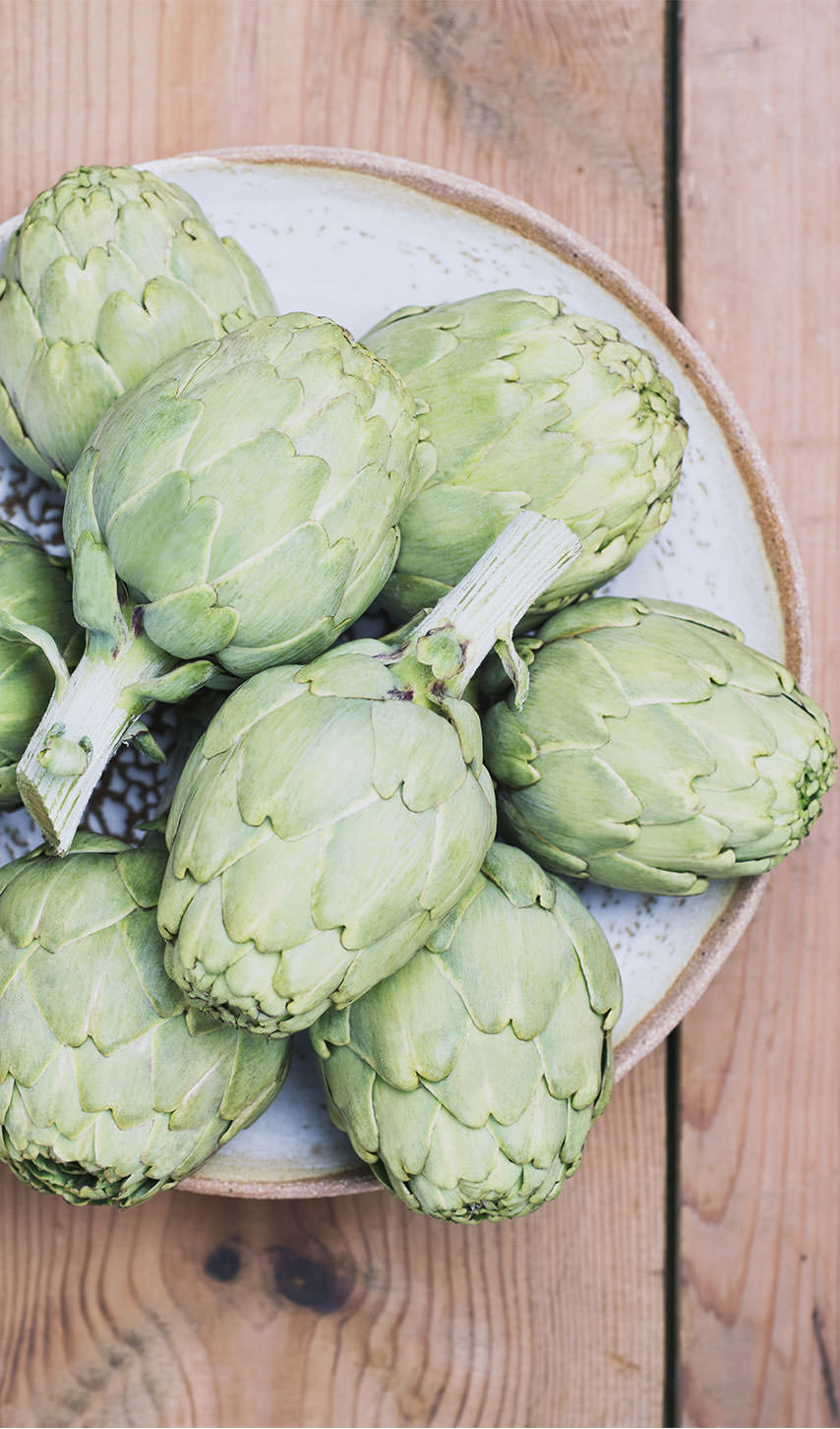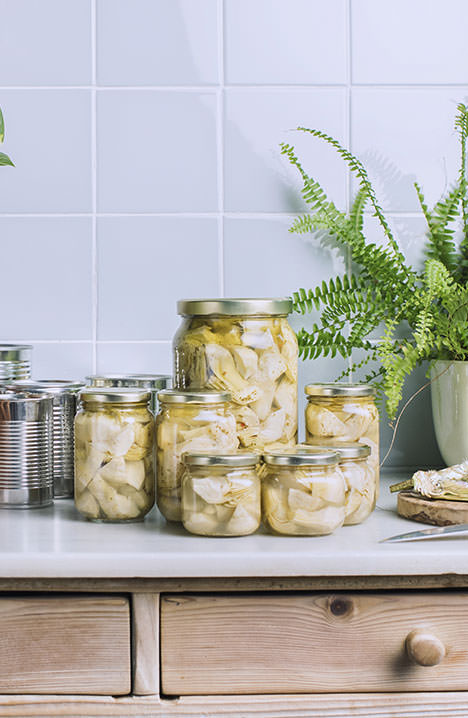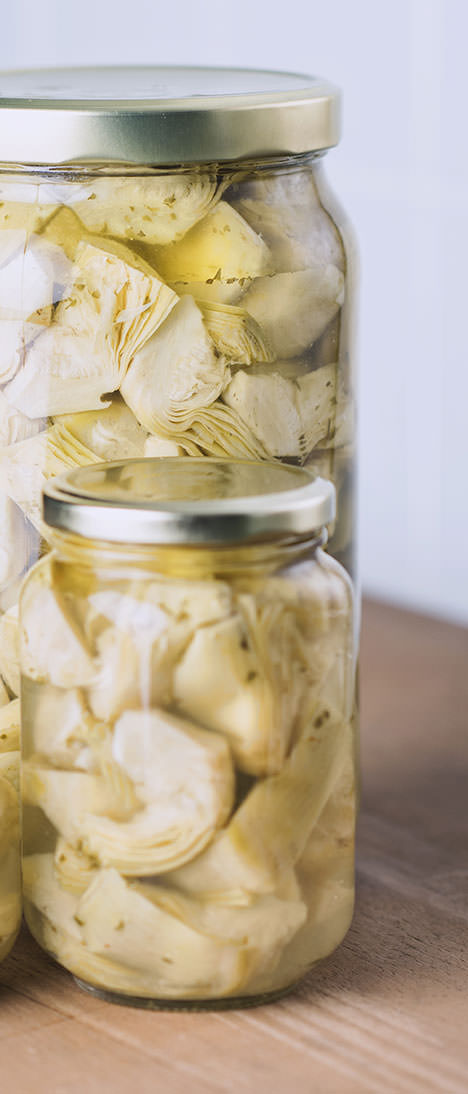From the field…
Growing artichokes is not an easy task. Achieving fleshy and flavourful vegetables is not by chance, but by the effort made by farmers every day. Because such a delicious result can only be achieved if these factors are controlled to perfection:

The climate
Most artichoke crops are grown in the Mediterranean area, and this is no coincidence. Artichokes need soft, mild climates to grow and do not withstand intense cold or excess heat, therefore the Mediterranean coast is their favourite place. Although this is their preferred region, we can also find first-rate artichokes coming from other areas of Spain. There are also crops in colder areas such as in Navarra or in inland Granada, where great quality and renowned artichokes are obtained. Moreover, in this area, the production starts in the summer, for this reason, added to the rest of producing areas, we are privileged to be able to enjoy artichokes all year round. Besides temperature, other variables such as relative humidity and light have a direct influence on the growth of the plant.

The irrigation
As with the climate, it is also important to find the perfect balance when it comes to irrigation. This plant needs large amounts of water to grow, especially for the vegetative growth and the head production; although too much water can lead to waterlogging of the roots. It is thus essential to control the water needs of the plant in accordance with temperature, rainfall, soil texture and its variety.

The nutrients
Success in growing strong and healthy artichokes depends on what we provide them. Ideally, they should be provided with a good basal dressing with fertilizer or compost and a top dressing throughout the plant lifecycle.

The cropland
Artichokes are plants that, depending on the variety, reach between 50 cm and 2 metres in height, with a strong, deep root system. To achieve optimal growth, the soil must be healthy, deeply aerated and rich in organic matter and humus.
The production
Most of the artichoke production is made from vegetative material, such as stumps or splits. It is not long before artichokes are productive; with proper irrigation and care, within 3 or 4 months they start bearing its fruits.
Once the first batch blooms, artichokes are harvested and classified for commercialization. A quality artichoke must have closed, compact bracts around the capitulum and a tender heart. Furthermore, the heads must be of an appropriate size and free from damage.
Around 2 or 3 months after harvesting the first batch, the second grows and the procedure is repeated. Once the harvest of the heads is finished, when the plant starts to get dry, it is cut at roughly 10 cm from the floor, so that new plants can grow in the next production cycle. After two or three years, each plant is extracted from the land to obtain the vegetative material and plant it again.
The production chain
The most important thing in this stage in the process is to trying to keep the product in perfect condition and to preserve its freshness as well as possible. To do so, watering during the harvest period is recommended to prevent wilting of the heads until they are packed and boxed. Furthermore, to avoid bumps and bruises that could affect the quality of the product, the artichokes are put in cases to be immediately transported to the preparation, classification and packing installations.

The harvest
In the main artichoke-producing countries in the northern hemisphere, the time when artichokes are ready to travel to the point of sale is from October or November on for the earliest varieties, lasting until the end of May, with a winter pause in the areas with cold winters. In addition, certain varieties allow us to have artichokes from April to November, so we can enjoy this vegetable all year round.
…to our homes

Once harvested, we can find artichokes in our supermarkets in two ways: fresh or processed. Fresh artichokes have a shelf-life of 6-7 days; once this time has elapsed, they are withdrawn from the market. In the case of processed artichokes, tinned or frozen, their self-life increases substantially because they can have a useful life cycle of months, or even years. Moreover, each farmer has his own code, so we can always obtain information about the product traceability.
Fresh artichokes
When choosing artichokes, we always want them to be as beautiful as possible. We look for the most compact ones, with well-shaped leaves showing a light green colour. However, the appearance matters little if we want to find an artichoke ready to eat. The trick is to check their freshness pressing the artichoke close to the ear: if you hear a cracking sound, that means it is still fresh, apart from its vivid colour and its smoothness.

Let’s cook!
The artichoke is a very versatile food. It can be enjoyed in many different ways: fried, roasted, grilled, boiled or even raw in a salad. Therefore, we can eat them alone, as a garnish or as an accompaniment to a meal, since artichokes go well with meat, fish, rice, eggs and other vegetables.
Here are some steps to prepare artichokes in an easy and proper way.
1. Prepare a bowl to place each artichoke as soon as you peel it. Pour some water into the bowl and add salt and lemon to prevent artichokes from darkening.
2. Remove the stem of the artichoke (in some areas, part of the stem is kept depending on the dish to be cooked)
3. Snap off the outer leaves until the most tender leaves are visible, that is, the least green and more yellowish ones.
4. Clean the base of the artichoke, removing the hardest parts.
5. Cut off approximately 2 cm of the top of the artichoke. Depending on how green the points of the leaves are, you will need to cut off more or less.
6. Once peeled, the artichoke can be left whole (the so-called heart) or cut into halves or quarters. If preferred, it can be thinly sliced to enjoy it in a salad, an omelette, etc.
7. Lastly, put the artichokes in the previously prepared bowl and continue peeling the next artichoke.

The storage
Once at home, if they are not going to be eaten immediately, it is important to store them properly. There are many ways to keep our artichokes in good condition, here are the best:
- To keep them in perfect condition for roughly one week, they should, ideally, be put in a closed plastic bag and kept in the refrigerator.
- If you have bought them with the stem, they can be kept in water, as is usually done for flowers, and then they should be put in the refrigerator. To prevent them from drying, it is best not to cut the stem until you plan to eat them.
- And if you want to preserve them for months, you need keep them in the freezer.
- Once cooked, they need to be kept in the refrigerator and it is preferable to eat them within 24 hours.

Processed artichokes
When it comes to processed products, it is very important to control the pH at all times. To do so, an analysis is carried out at the beginning of the process, which has to guarantee that the final product does not have a pH higher than 4,2, so that it is devoid of bacteria.
Processed artichokes can be found in two ways:
- Tinned:
The artichokes is a very versatile vegetable that gives us so many cooking possibilities. When tinned, the heart of the vegetable, whole or in halves, is packaged in glass containers. It is a very delicate process and only healthy pieces, free from bumps, clean, with a fresh appearance and an homogeneous colour, are chosen.
With this method, the flavour, the nutrients and the properties – above all the antioxidant power – of the artichoke remain intact. Moreover, the consumer finds them easier to eat, since the final product is ready to use.
- Frozen:
A cold conservation presents a highly appropriate method to keep the nutrients of the vegetable in good condition, especially its vitamins, which are essential to our bodies.
Not a day passes without an artichoke
Spain is Europe’s second largest artichoke producer. Its production reaches a total volume of 204 thousands of tonnes (according to a study of 2013). 16 different regions produce artichokes at different times throughout the year, so that we can enjoy artichokes all year round.




